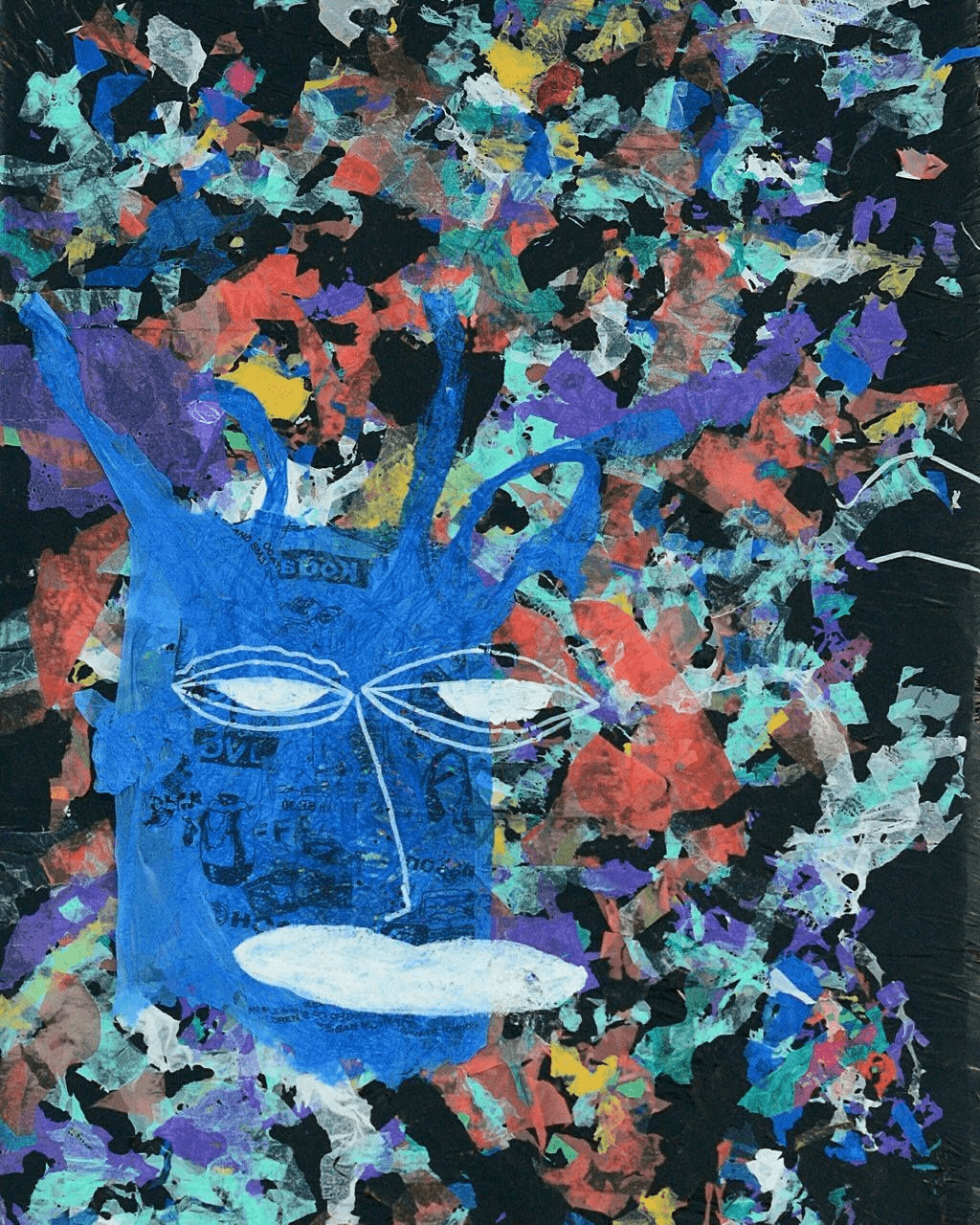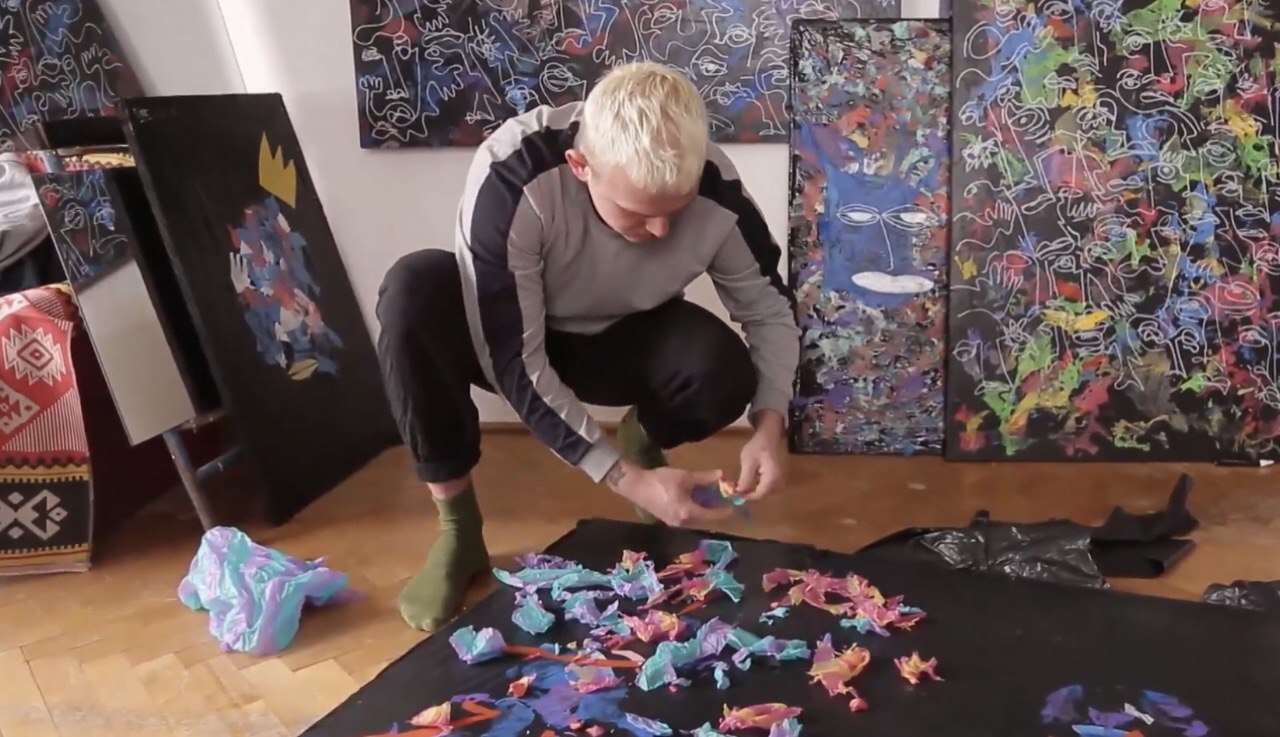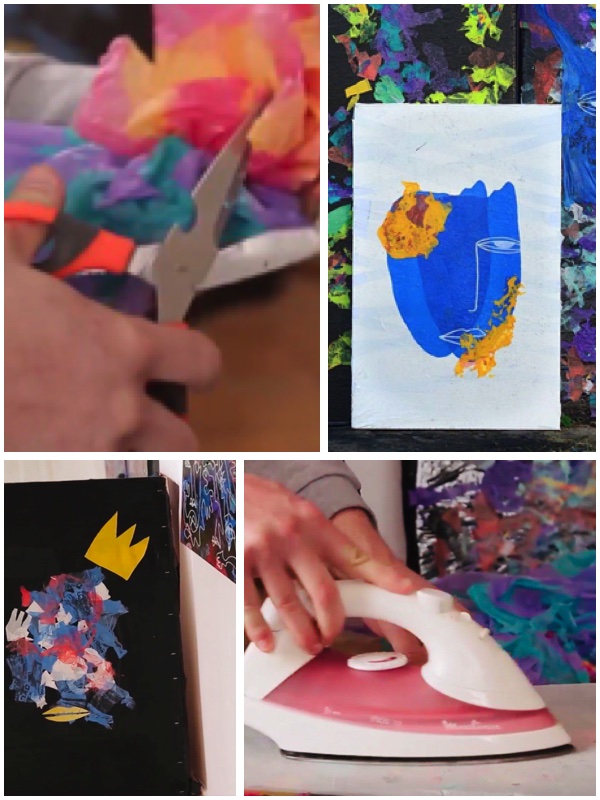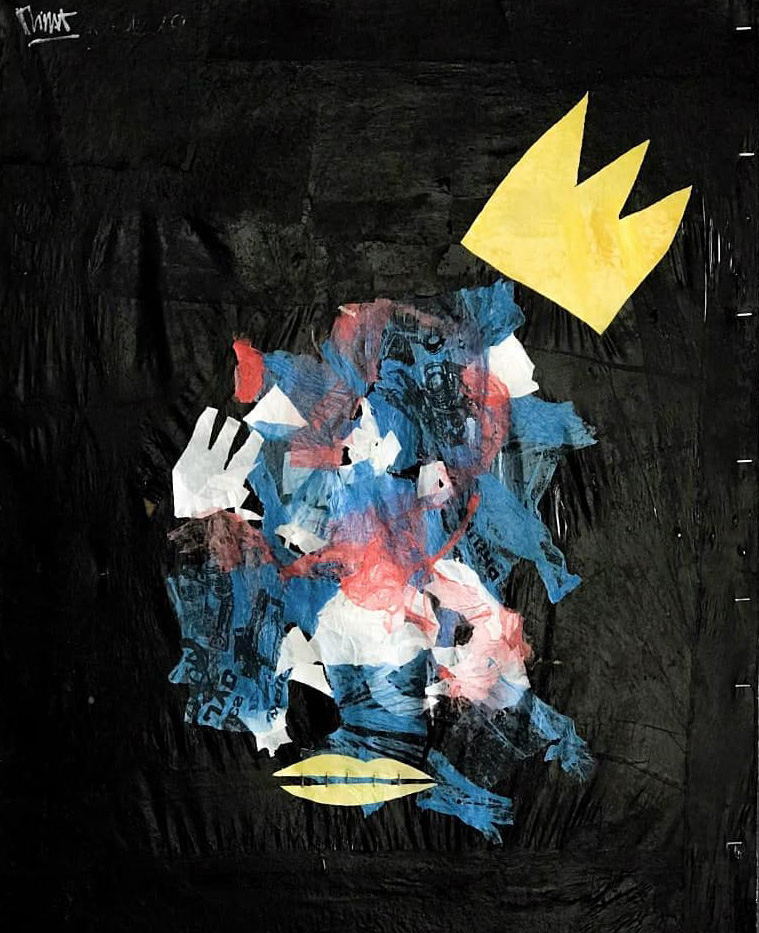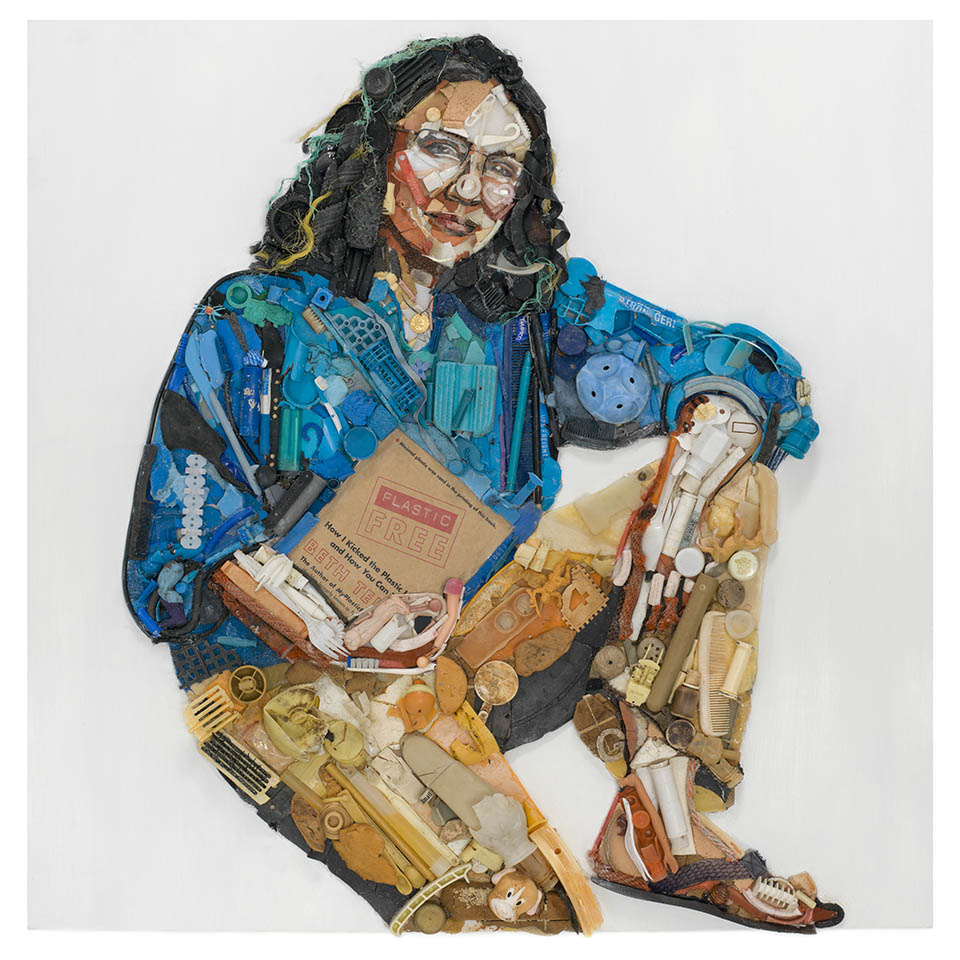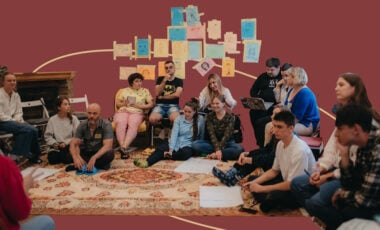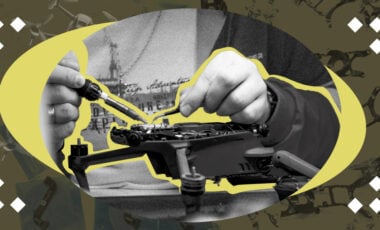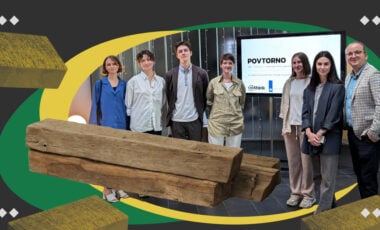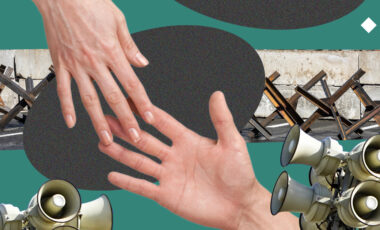Art made of waste: how a Chernivtsi resident promotes trash art
Spoiler: Plastic is where he gets color for his paintings. We explain how and why.
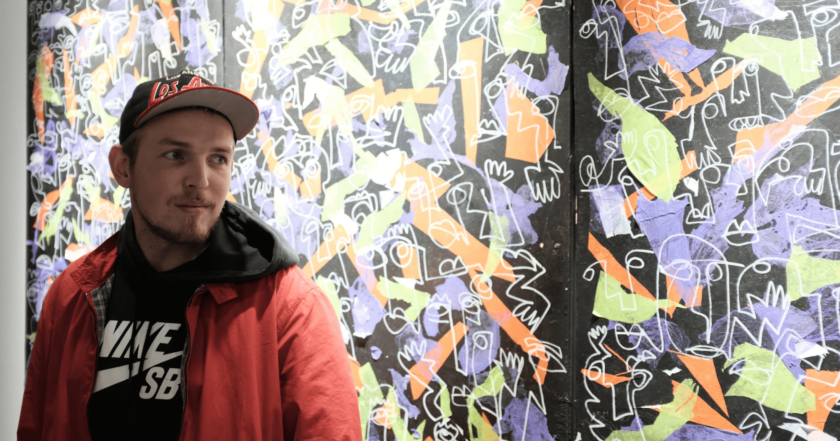
Andrii Pilat
The problem of recycling plastic waste is the most pressing in the world. Every year, humanity produces millions of tons of waste. Meanwhile, only about 10% of plastic is recycled. Approximately the same amount is incinerated, and more than 70% ends up in landfills and the environment. Plastic waste pollutes the soil, water, air, and causes irreparable damage to the ecosystem. People all over the planet are considering how to deal with plastic pollution. There are some successes, but a universal solution to waste disposal, unfortunately, hasn't been discovered yet.
However, for one, it's garbage, for another, it's the source of inspiration and material for creativity.
Trash art, as an art direction, appeared not so long ago. In the early twentieth century, artists, tired of traditional forms and materials, began to experiment. The innovators' goal was to prove to viewers that masterpieces can be created from anything, even unnecessary junk, usually lying underfoot. The public and critics liked collages of used tram tickets, wine labels, pieces of rope, and empty cans, so trash art began to gain worldwide popularity. Following the artists, sculptors began to create pieces from city garbage.
Ukrainian art manifesto against garbage
Ukrainian artist Andrii Pilat from Chernivtsi considers waste to be his paint. For several years, he's been collecting plastic garbage in his city and creating fantastic canvases from it.
"To me, in general, the consumer lifestyle is alien," the artist says. "Once I went for a walk to the river in my native Chernivtsi. What I saw overwhelmed me: the entire shore was littered with garbage, i.e. plastic bottles, bags, food packaging. I collected as much as I could. I felt unpleasant and bitter for the townspeople. I understood, if I throw it in the bin, there's no guarantee that it won't appear in the water again after a while. At first, I tried to alloy a mass of garbage and make a table out of it, but nothing came of it, but in the process, I saw that each piece of plastic had its own texture and color, it melted well and could serve as paint. That's how the call for making a picture arose."
Andrii is a food engineer by education but works as a stand-up comedian. And in his free time, he "paints" with plastic bags.
"I see the space, but it's really hard to notice it's too cluttered. Many important points dissolve in the useless, and we ourselves turn into landfills of things, without even having time to comprehend it. We're the walking dumps of food, information, ourselves. Emotions and authentic experiences have become the periphery, they're supplanted by relentlessness and brevity."
The artist speaks about it in color. When asked about topics or titles of his paintings, he shrugs his shoulders, because what's important to him isn't "what" but "how."
How to create a painting out of plastic?
The materials for the paintings are plastic and polyethylene (HDPE2/LDPE4), and a little white acrylic paint. Tools are iron and hairdryer. In working with polymers, the artist is most attracted to their uncontrollability during heat treatment, and unpredictability and spontaneity give a guarantee that the picture will come out alive.
It takes a long time, from a few days to a few months, to find the right colors and textures. He usually goes out to hunt for garbage alone and collects waste on landfills and streets. There's nothing difficult in finding the right "paints." "Thanks" to the progress, plastic waste is now at every turn. From time to time, the homeless help him in his search; the guy pays them with food or money. Andrii even bought a watch for one of them so that he wouldn't be late for the meeting. Children from the art school also help the artist clean the city; he organizes volunteer clean-ups for them.
"I'm inspired by life and nature. The key thing is to observe life and what's happening. My paintings are also space. I want to leave it as open as possible to dialogue so that those who'll look at it fill it themselves. For me, creativity is always a conversation. Interview with yourself, colors with emotions, images with the viewer. I accept the entire range of emotions and am not afraid to be provocative. I never know what response this color and this shape may find. We make the plot together: the canvas and the viewer's imagination."
But there's no internal dialogue during the process, only calmness.
"It's a blissful state," Andrii admits. It's probably what a complete immersion in the stream of the unconscious and communication with the universe artists and poets so often speak about should look like. Finished works have to be reworked more than once because the author is often dissatisfied with the result.
It takes about a package of garbage to create one painting. The paintings are quite large, 81 by 120 cm, and the triptychs are 245 by 120 cm. The entire process takes about 3-4 days to collect and execute. If the garbage is collected, one can handle it in a day. Andrii Pilat doesn't set records and doesn't pay much attention to any specific terms and figures.
He has created about 40 paintings in four years. In general, all the paintings are sold; among the buyers, one can find Ukrainians and Europeans. During this time, several exhibitions took place: unusual paintings were hosted by Lviv, Kyiv, Chernivtsi, Ivano-Frankivsk, Khmelnytskyi, Ternopil.
Waste is also our history
What's special about Andrii Pilat's paintings, apart from the material?
"In history, every found material is the story of a person we won't learn about," the author believes. "Each thing can also tell its story. The discarded fruits of civilization in my works become symbols of the interaction of humans and nature, present and past. That once my grandmother helped pack these paintings, and I liked to look at it. That it's a constant experiment that will never end."
Plastic waste is everywhere now. What humanity created to make people's lives easier has turned into an immortal octopus one can't hide from. What we see on our streets and landfills is just the tip of the iceberg. We send out-of-date items, disposable tableware, packages, bottles, and packaging to the landfill hoping that they'll be recycled, at best, and we believe that it's the end of our mission. Indeed, waste collection points send plastic to the production of secondary products. But in Andrii Pilat's opinion, it's a vicious circle. Plastic will be produced again and again until we refuse to use it.
"My paintings aren't only self-expression, they're also an imprint of conscience. I don't imply the concept of three Rs (Reduce. Reuse. Recycle), although it's not hard to plumb. But I'd probably give up such art for the lack of plastic around.
Then I'd search for color elsewhere. In the meantime, I'm melting everything you had on hand yesterday, what I find at my feet today. And that's how I learn to live, too."
Even more art on waste knowledge
Humankind's comprehending the crisis of overproduction of household items has led to the transformation of consciousness in artists. Support for the recycling philosophy joined the thirst for shock. Today, creating their works, many artists not only surprise and fascinate but also contribute to the environment, because they work exclusively with waste.
French artist Gilles Senazandotti collects garbage by the sea and makes sculptures of animals that suffer from the modern environment.
Canadian Tess Felix also collects plastic, washing ashore, and puts out portraits of activists fighting for clearing the world's oceans.
American professor Guy Rifler converts toxic waste into the paint, then used by artists. He invented his own method of purifying water and creating pigment and teamed up with another university professor, art specialist, and artist John Sabraw, who was the first to use Rifler's paints for his paintings.


